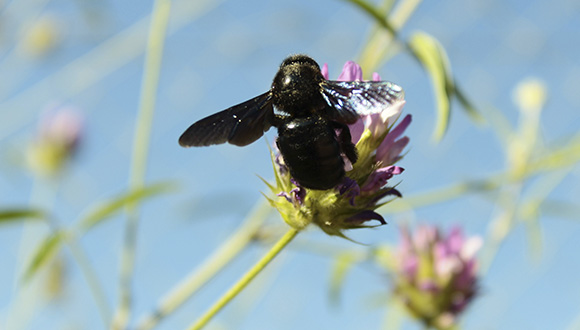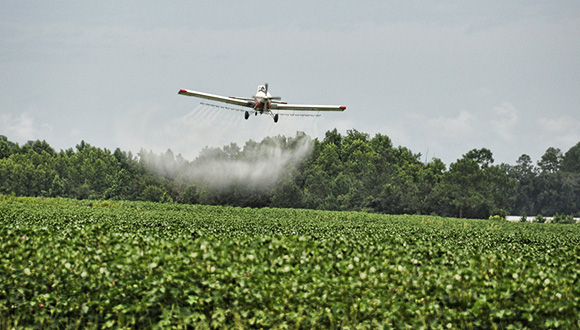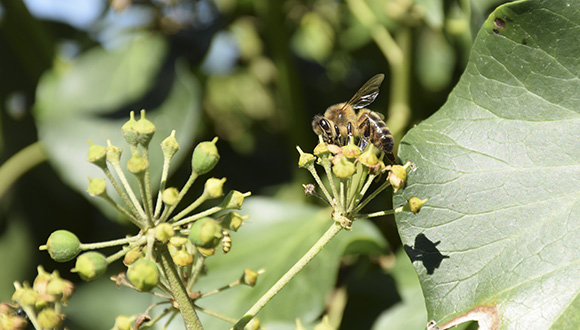Bee decline is a fact
Experts at CREAF say that bee populations are on the decline and that pesticides such as neonicotinoids are one of the main causes. It is important to promote organic, sustainable agriculture and move forward on the prohibition of these compounds.

Many studies have shown that bees are suffering declines in their populations, with some species even on the verge of extinction. The main causes for this are urbanization and development in rural areas, the introduction of new species, climate change, and pesticide use. Pesticides in particular have been the subject of recently renewed debate. While some NGOs such as Greenpeace urge the banning of a certain class of pesticides called neonicotinoids, the authorities in charge of such matters believe that the evidence to put such prohibitions into force is still lacking.
CREAF ecologists Jordi Bosch and Anselm Rodrigo (Rodrigo is also professor of the Autonomous University of Barcelona) say that there is sufficient evidence that neonicotinoids harm bees. They also highlight an important detail about what is occurring in the environment between insects and pesticides – the problems do not only stem from single active ingredients, but also from combinations and interactions of a multitude of compounds. “It is not only about intoxication from insecticides. Intensive agriculture also employs fungicides and other treatments. In fact, some of the products which are marketed as harmless to bees can become dangerous in combination with other chemicals,” says Dr. Rodrigo.
The effects of pesticides go beyond bee mortality
In a recent study, Jordi Bosch and researchers from Italy and Poland analyzed the effect of low doses (non-lethal) of the fungicide propiconazole and the neonicotinoid clothianidin. “It is important to analyze doses of exposure similar to those encountered in the field in order to get realistic results about how bees are affected by chemical products. In this case, we compared the honeybee (Apis melifera), the bumblebee (Bombus terrestris) and a wild bee species (Osmia bicornis),” says the CREAF researcher. He continues: “the results show that, at the doses tested, each product separately is not toxic, but when the bee ingests both products there is significant mortality. Of the three species, the most affected is the wild bee.”

But the researchers’ objective was not limited to measuring how many bees die from insecticides, since in fact the effects are wider. According to Anselm Rodrigo, “the use of pesticides in croplands also has consequences before death, including stunning or behavioral changes. For example, in sprayed fields honeybees do less dancing used for orientation before leaving the hives, and this has the consequence that they train fewer companions where to forage; some get lost and don’t return to the hive, or they may need more time to find the flowers – as a result they are less productive.” This may explain, among other reasons, why many beekeepers increasingly find their hives practically vacant, a phenomenon known as colony depopulation syndrome.
Honeybees in Spain: one species among thousands
“A common error when putting these problems on the table is to only talk about honeybees. The number of honeybee hives has diminished in some countries, but if the species is studied on the global level it would not be correct to say that it is at risk of extinction. It is the wild bees which are suffering a severe decline,” says Dr. Bosch. He also offers a surprising statistic: “In Spain the proportion of wild bees to honeybees is 1000 to 1. Of course it is important to study the honeybee, but this alone isn’t sufficient because there are other species involved in pollination and important for crop productivity which are also affected by insecticides.”
From local to large-scale effects
Harming bees doesn’t end with the death of these insects, but also has other effects on a large scale. Bee decline also causes biodiversity loss, undermining a key attribute of ecosystems and food webs, in addition to reduced crop pollination.
It mustn’t be forgotten that neonicotinoids are persistent in soil and, as a result, they can end up contaminating aquifers and the air through dust caused by machinery such as tractors. Taking these additional factors into account, it becomes evident that human health may also be affected. “In the future it will be necessary to substitute intensive agriculture and monoculture for organic systems based on ecosystem services,” say the CREAF and UAB researchers.

REFERENCED ARTICLE.
Sgolastra F., Piotr Medrzycki, Bortolotti L., Molowny-Horas Roberto, Bosch J. et al. Synergistic mortality between a neonicotinoid insecticide and an ergosterol-biosynthesis-inhibiting fungicide in three bee species. Pest Management Science 73 (6), 1236-1243. DOI 10.1002/ps.4449
·







